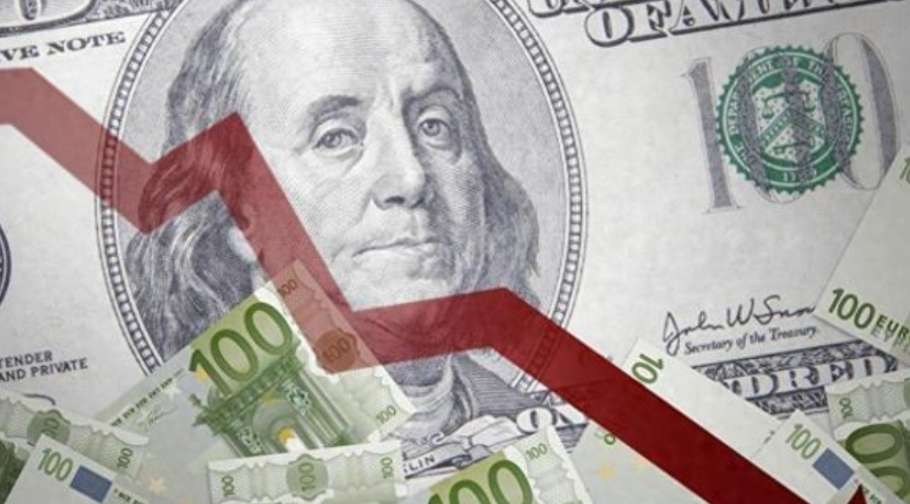The Easing Cycle in the U.S. is Approaching
Advertisements
Recently, during the annual global central banking symposium held in Jackson Hole, Federal Reserve Chair Jerome Powell made a significant statement, indicating that “it is time to adjust policies.” This marks the probable end of the interest rate hike cycle that began in March 2022, with expectations building that the Fed will announce its first rate cut in September.
Market analysts are increasingly preparing for this anticipated reduction in interest rates. According to CME’s FedWatch, the current odds of the Fed cutting rates in September stand at a striking 100%, with forecasts suggesting that a total cut of 100 basis points could take place within the current year. Following July, the US dollar has shown a marked decline, with the dollar index dropping from 106 to around 100. Correspondingly, long-term US Treasury yields have also decreased, as the 10-year Treasury note yield has dropped approximately 90 basis points from previous highs to approximately 3.8%. In stark contrast, gold prices have surged above $2,500 per ounce.
The recent decline in US inflation rates, along with a slowdown in the job market and recession fears amplified by the so-called “Sam Rule,” have contributed to turbulence in global financial markets, further fueling the Fed’s timely policy shift. Powell emphasized, “As we make further progress towards our goal of price stability, the Federal Reserve will do everything possible to support the labor market.” Thus, the Fed’s focus is shifting from controlling inflation towards boosting employment.
In July, the US Consumer Price Index (CPI) growth rate fell to 2.9%, inching closer to the Fed’s target of 2%. Meanwhile, the unemployment rate climbed from 3.8% in March to 4.3% in July. Recently, the Labor Department revised its estimates downward, indicating a significant reduction of 818,000 in the total non-farm employment figures through March 2024, which suggests there may have been an enormous degree of “false prosperity” in the US labor market for an extended period.
Fears of recession have led to intense volatility in global financial markets, particularly evident in the Japanese Nikkei index, which plummeted by 20% in just three days at the beginning of August. The US stock market exhibited a dramatic “deep V” pattern since mid-July, with the Fed’s coordination helping to temporarily ease global market anxiety.
As the Fed embarks on a rate-cutting trajectory, the pertinent question arises: does this indicate a clear pathway for global markets? The answer is not necessarily affirmative. An essential principle in capital markets is the notion of “buy the expectation, sell the fact.” Observing past rate-cutting phases, markets often perform well during the buildup to a rate cut, yet may falter once the Fed actually implements a reduction. A case in point is the 2007 rate cut cycle, where the US stock market peaked right after the Fed’s announcement.

A contributing factor is that market trends typically progress ahead of actual events. Since the second half of 2023, the continued rise of US stocks has likely preemptively priced in the effects of forthcoming rate cuts. Consequently, once the reductions are officially enacted, some investors might choose to take their profits and exit the market.
Another aspect to consider is that the rationale behind the Fed's shift in policy stems from significant concerns regarding employment and economic slowdown. Thus, the landscape of uncertainty looms larger, and whether the US economy can achieve a smooth landing remains uncertain. Additionally, the trajectory of future interest rate cuts is also riddled with unpredictability. At the recent global central banking conference, Powell did not provide explicit guidance regarding the pace and timing of the cuts, stating that “the timing and speed of rate adjustments will depend on future data, evolving forecasts, and risk assessments.”
From a Chinese perspective, the Fed’s entry into a rate-cutting cycle, accompanied by the depreciation of the dollar and falling bond yields, is likely to alleviate the pressure on the renminbi (RMB). Since July, the offshore RMB exchange rate has appreciated from 7.31 to around 7.10, suggesting that external constraints on Chinese monetary policy are diminishing, thereby widening the operational space for future policy maneuvers. In mid-June, People's Bank of China Governor Pan Gongsheng mentioned at the Lujiazui Forum that “major economies' monetary policies are gradually shifting, the momentum behind the dollar’s appreciation is weakening, and the convergence of domestic and foreign monetary policy cycles has relevance. Collectively, these factors help maintain the basic stability of the RMB exchange rate and ensure balance in cross-border capital flows, thus expanding China's monetary policy flexibility.”
From the perspective of the A-share market, when the RMB undergoes prolonged depreciation, foreign capital is likely to flow out, placing downward pressure on local stocks. Conversely, when the RMB trends towards appreciation, foreign investments often surge, promoting a more favorable outlook for A-shares. As the Fed initiates its rate-cutting cycle, the depreciation of the dollar becomes more imminent, placing the RMB on a course for sustained appreciation. This influx of foreign capital could significantly catalyze positive movements within the A-share market.
Leave a Comment